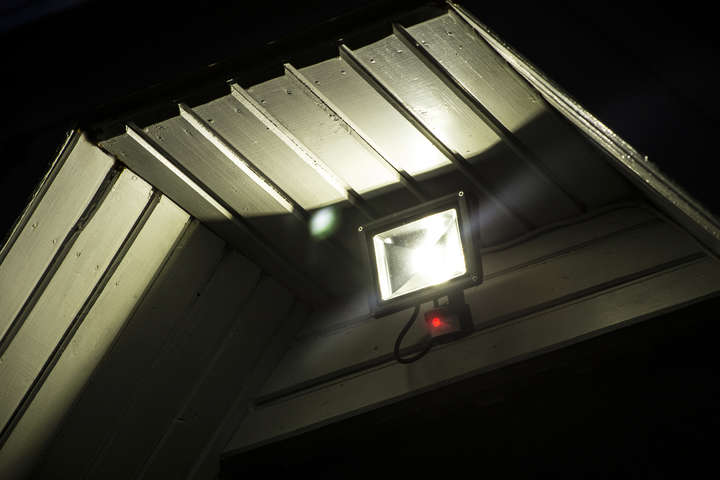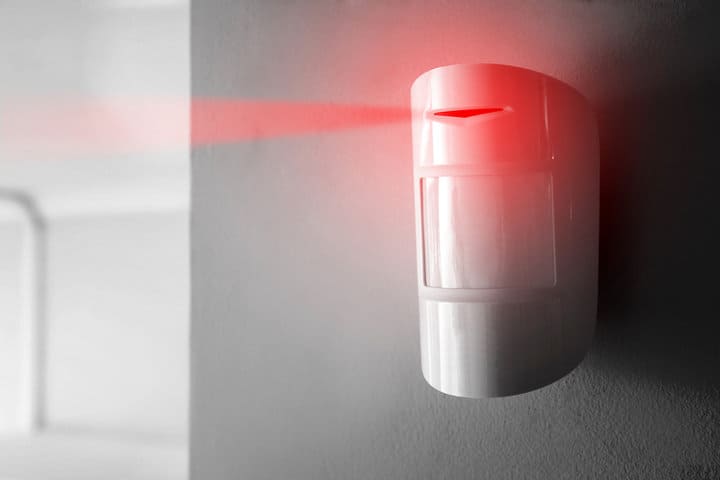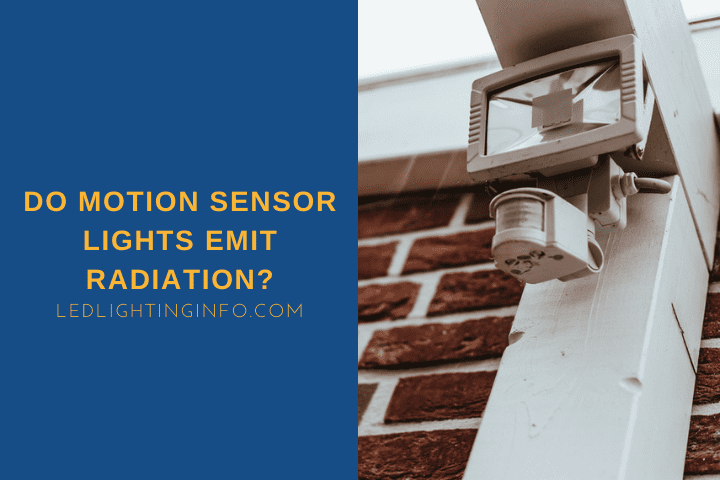Motion sensors work in various ways, and most of them rely on some form of radiation to work.
Now, that can sound a bit scary.
The word ‘radiation’ conjures up all kinds of images if you’re unfamiliar with some of the science behind motion sensors, so are they safe to use?
Some motion sensors emit radiation types, including radio waves and microwaves. These are at completely safe levels for humans and will not be harmful. Other sensors are passive, acting as receivers for our natural radiation (infrared).
To clear up any concerns you might have, let’s explore:
- The different types of motion sensor that emit radiation
- How infrared motion detectors spot radiation
- Whether these sensors are safe
Which Types Of Motion Sensors Emit Radiation?

Firstly, there are two main types of motion sensors – passive and active.
Passive motion sensors don’t emit anything – they are purely a detector.
The most common is the Passive Infrared, a sensor that detects the heat and light changes in an area based on infrared energy emitted by people or animals.
Active sensors are named so because they actively emit a signal.
This signal will either be aimed at a receiver – where the sensor is triggered if the receiver is blocked – or it will be looking for any signal to be bounced back to the sensor from an interfering object.
So immediately, we can rule out passive sensors from emitting radiation because they don’t emit any signals at all whatsoever.
They are purely receivers.
Active sensors do emit forms of radiation – different types emit different kinds of radiation:
Microwave sensors project microwaves around a room and receive reflected microwaves within microseconds to understand whether something is within the detection area.
Tomographic sensors create a field of radio waves and measure where that field is disturbed by a foreign object.
Ultrasonic sensors, which send ultrasonic waves from the sensor to a receiver, and trigger when the signal is blocked.
What Type Of Radiation Microwave Sensors Emit?

Microwave sensors use microwaves to detect any changes in motion.
Microwaves travel exceptionally fast, and so any rebounding microwaves captured by the sensor will detect movement as soon as someone steps into the detection area.
They have several benefits over other sensors, especially the popular PIR sensor. They can work in almost any environment.
Based on infrared heat, PIR sensors will become unreliable once the temperature exceeds 35 degrees Celsius or 95 degrees Fahrenheit.
You may be concerned because basic science tells us that microwaves are dangerous to humans – they have the same heating effect as they do in a microwave oven.
But only at a specific frequency.
Microwave sensors use low-frequency microwaves which are not harmful to humans.
You can use them safely for as long as you want without any concerns.
How Do Infrared Motion Detectors Spot Radiation?

Humans and animals give off heat via an infrared signal.
The heat that we generate produces this signal, which you’ll be used to seeing if you’ve ever watched footage of a thermal imaging camera.
PIR sensors work by detecting these infrared signals – or rather, they detect a change in the amount of infrared within their field of view – and then activate.
This makes them really simple and effective in outdoor spaces because they don’t rely on an extra sensor. The elements can’t obstruct the radiation of infrared.
Their drawbacks are that they only work with line-of-sight. They don’t have any way of differentiating between humans and animals.
As long as the levels of infrared radiation within the detection field change, the sensor will trigger.
Related: Do Motion Sensors Only Work At Night?
Are Infrared Motion Sensors Safe?

So, are PIR sensors safe to use? Absolutely. Because they literally don’t emit anything at all.
They’re only reading the radiation levels we’re already naturally emitting ourselves.
It’s exactly the same as if they were using a camera to detect movement or a microphone listening for us – there’s nothing that it is giving off; it is purely a receiver.
But how about the other types of motion sensors? Are they safe too?
Well, I’ve already covered the microwave sensors above.
They’re harmless because they use a lower frequency microwave than one which could damage our bodies.
And it’s not like they’re limited and could break and accidentally give off higher frequency microwaves that could be harmful – that’s not possible.
Tomographic sensors use radio waves that are similar to how our cellphones operate.
Using a tomographic sensor exposes yourself to no different radiation than you would be using a cellphone or having one near you in the room.
And while some people do have concerns about how safe cellphones are to use, there is no evidence that RF waves can cause cancer or any other illness falsely attributed to them.
Finally, ultrasonic sensors emit a sound wave outside of the human range of hearing, which is picked up by a sensor.
And most of the time, these sound waves are no problem at all.
However, there is a chance that standing underneath an ultrasonic sensor for hours or days at a time could lead to some negative side effects caused by the continuous ultrasonic sound.
Expect headaches and potentially nausea.
But this is only from consistent, long-term, and uninterrupted exposure. So generally, if you plan on not being in the same place as an ultrasonic sensor 24/7, you will be fine.
Also read: How To Make Motion Sensors To Stay On?
Final Words
While the word “radiation” can be a bit concerning, some common sense should always help. There’s no way that motion sensors could be sold to the general public if they were dangerous.
Can you imagine the lawsuits?
Generally, most types of radiation emitted by motion sensors are completely undetectable, and it’s the only extreme exposure to ultrasonic ones that would have a slight chance of causing any temporary harm.
So when deciding which motion sensor to use in your home, you can base it purely on its benefits and drawbacks as a sensor, without health becoming one consideration.
Which motion sensors do you use in your home?

